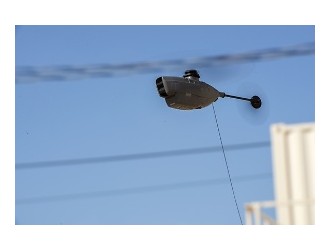The DHS isn’t doing its job because it doesn’t know what its job is. Rather than combating terrorism, the department should refocus its mission around combating risks of all kinds.
The Department of Homeland Security is still searching for a coherent mission after it was created as a mishmash of 22 disparate agencies in the rush to respond to the Sept. 11 attacks. Congress and the president created the department with the explicit mission of preventing terrorism, but they included unrelated agencies that needed a home, while other important terrorism- or disaster-related agencies were left out.
Today, the department’s management spends much of its precious time responding to the headline of the day across multiple missions of protecting the border, preparing for natural disasters, and managing airport screeners. Its frontline employees don’t fare any better -- the agency routinely tops the list of worst places to work in government. Fortunately, the department can do better. Public administration scholars have found that one of the best ways to improve job satisfaction is to make missions and goals more clear and less ambiguous.
Fixing the department requires jettisoning the holding company model and leaving the job of curbing terrorist threats to the Department of Justice, which houses the FBI. Without terrorism at the center, the agency can refocus on assessing and reducing an array of risks for natural and technological disasters. For any particular threat, such as terrorism or hurricanes, risk is a function of the probability of the threat multiplied by the potential consequences. That sounds simple enough, but if done correctly it could transform how we prepare for disasters and make the country safer.
Right now, the DHS manages siloed programs to prepare for many different kinds of threats. But it is difficult to prioritize investments across different threats over time. A reformed department would compare the risks posed by hurricanes, forest fires, tornadoes, radiological “dirty bombs,” and cyber attack. Some defenses, such as concrete barriers, can reduce the damage caused by both floods and terrorism. The department could also assess risks over time. Investing in mitigation, or reducing the damage caused by disasters before they happen, is cheaper than coming to the rescue after a disaster. A report from the Multihazard Mitigation Council found that mitigation saves society an average of $4 saved for every $1 spent. It is difficult to convince politicians and department leaders to spend money on mitigation, however, because they cannot easily take credit for helping to prevent a disaster that never happened, or that might not happen on their watch.
The DHS’ disaster management arm, FEMA, already offers grants to states and localities to build mitigation programs. But these programs are modest, and FEMA employees make up less than two percent of the department. Extending the mission of FEMA’s modest mitigation directorate would reorient the department around illustrating what risks society faces and what investments would reduce them. There is much work to be done. Convincing cash-strapped jurisdictions to spend money on mitigation requires evidence that the cost is worth it.
Some department officials say that they are already doing risk management. When compared with the careful forecasts of the National Oceanic and Atmospheric Administration or the exhaustive reports of the General Accountability Office, however, DHS products come up short. Building on analytic capacity from other agencies and the privacy sector could make the DHS the government face for information about risk.
For all the complaints that cities make about the department, the DHS has closer ties to cities and states than do most of the expert science agencies in the federal government. DHS border agents work closely with state and local police, and FEMA operates grant programs with every state and many counties. The department’s connections to the street level could be significantly enhanced with a sharper focus on risk management that leverages these existing relationships.
A reinvigorated DHS would leave chasing terrorists to better equipped agencies, jettisoning the ostensible reason for the department’s creation. Its new and expanded mission of assessing, illustrating, and reducing risks of disasters of all kinds is better suited for the 21st century. The world may not be more dangerous than it was in the last century, but it is more complex. The department’s mitigation programs, relationships with states and localities, and emerging analytic capability make it the ideal hub for a risk management mission.





